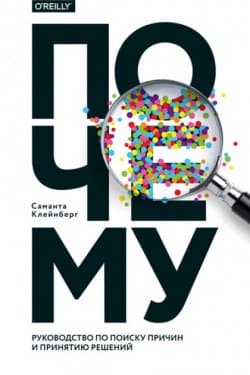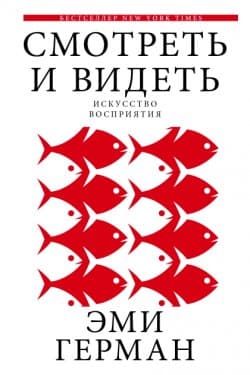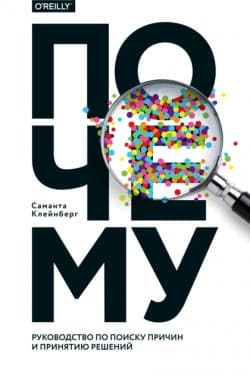Почему - Саманта Клейнберг (2017)
-
Год:2017
-
Название:Почему
-
Автор:
-
Жанр:
-
Язык:Русский
-
Страниц:161
-
Рейтинг:
-
Ваша оценка:
Почему - Саманта Клейнберг читать онлайн бесплатно полную версию книги
Spellman, B. A. (1996). Acting as Intuitive Scientists: Contingency Judgments Are Made while Controlling for Alternative Potential Causes. Psychological Science, 7(6): 337–342.
Spellman, B. A. and Kincannon, A. (2001). The Relation between Counterfactual (“But for”) and Causal Reasoning: Experimental Findings and Implications for Jurors’ Decisions. Law and Contemporary Problems, 64(4): 241–264.
Spencer, S. J., Steele, C. M., and Quinn, D. M. (1999). Stereotype Threat and Women’s Math Performance. Journal of Experimental Social Psychology, 35(1): 4–28.
Spirtes, P. (2005). Graphical models, causal inference, and econometric models. Journal of Economic Methodology, 12(1): 3–34.
Spirtes, P., Glymour, C., and Scheines, R. (2000). Causation, Prediction, and Search, 2nd edition. The MIT Press, Cambridge, MA. First published 1993.
Spirtes, P., Meek, C., and Richardson, T. (1995). Causal Inference in the Presence of Latent Variables and Selection Bias. In Proceedings of the Eleventh Conference on Uncertainty in Artificial Intelligence.
Starr, S. B. (2014). Evidence-Based Sentencing and the Scientific Rationalization of Discrimination. Stanford Law Review, 66: 803.
Steyvers, M., Tenenbaum, J. B., Wagenmakers, E. J., and Blum, B. (2003). Inferring causal networks from observations and interventions. Cognitive Science, 27(3): 453–489.
Stone, N. J., Robinson, J., Lichtenstein, A. H., Merz, C. N. B., Blum, C. B., Eckel, R. H., Goldberg, A. C., Gordon, D., Levy, D., Lloyd-Jones, D. M., McBride, P., Schwartz, J. S., Shero, S. T., Smith, S. C., Watson, K., and Wilson, P. W. (2013). 2013 ACC/AHA Guideline on the Treatment of Blood Cholesterol to Reduce Atherosclerotic Cardiovascular Risk in Adults: A Report of the American College of Cardiology/American Heart Association Task Force on Practice Guidelines. Journal of the American College of Cardiology, 63(25): 2889–2934.
Stoppard, T. (director). (1990). Rosencrantz & Guildenstern Are Dead [Motion picture]. Cinecom Pictures, New York.
Subbotsky, E. (2004). Magical thinking in judgments of causation: Can anomalous phenomena affect ontological causal beliefs in children and adults? British Journal of Developmental Psychology, 22(1): 123–152.
Sudman, S. and Blair, E. (1999). Sampling in the Twenty-First Century. Journal of the Academy of Marketing Science, 27(2): 269–277.
Sullivan, W. (1982). New Study Backs Thesis on Witches. The New York Times, August: p. 30.
Suppes, P. (1970). A Probabilistic Theory of Causality. North-Holland, Amsterdam.
Susser, M. (1991). What is a Cause and How Do We Know One? A Grammar for Pragmatic Epidemiology. American Journal of Epidemiology, 133(7): 635–648.
Swartz, J. J., Braxton, D., and Viera, A. J. (2011). Calorie menu labeling on quick-service restaurant menus: An updated systematic review of the literature. International Journal of Behavioral Nutrition and Physical Activity, 8(1): 135.
Takao, K. and Miyakawa, T. (2014). Genomic responses in mouse models greatly mimic human inflammatory diseases. Proceedings of the National Academy of Sciences, 112(4): 1167–1172.
Tatonetti, N. P., Denny, J. C., Murphy, S. N., Fernald, G. H., Krishnan, G., Castro, V., Yue, P., Tsau, P. S., Kohane, I., Roden, D. M., and Altman, R. B. (2011). Detecting Drug Interactions From Adverse-Event Reports: Interaction Between Paroxetine and Pravastatin Increases Blood Glucose Levels. Clinical Pharmacology & Therapeutics, 90(1): 133–142.
Thompson, W. C. and Schumann, E. L. (1987). Interpretation of statistical evidence in criminal trials: The prosecutor’s fallacy and the defense attorney’s fallacy. Law and Human Behavior, 11(3): 167–187.
Thurman, W. N. and Fisher, M. E. (1988). Chickens, Eggs, and Causality, or Which Came First? American Journal of Agricultural Economics, 70(2): 237–238.

 Без невроза
Без невроза  Осколки времени
Осколки времени  Свет между нами
Свет между нами  Смотреть и видеть
Смотреть и видеть  Почему. Руководство по поиску причин и принятию решений
Почему. Руководство по поиску причин и принятию решений  Пир теней
Пир теней  Князь во все времена
Князь во все времена  Когда порвется нить
Когда порвется нить  Пока я здесь
Пока я здесь 



















